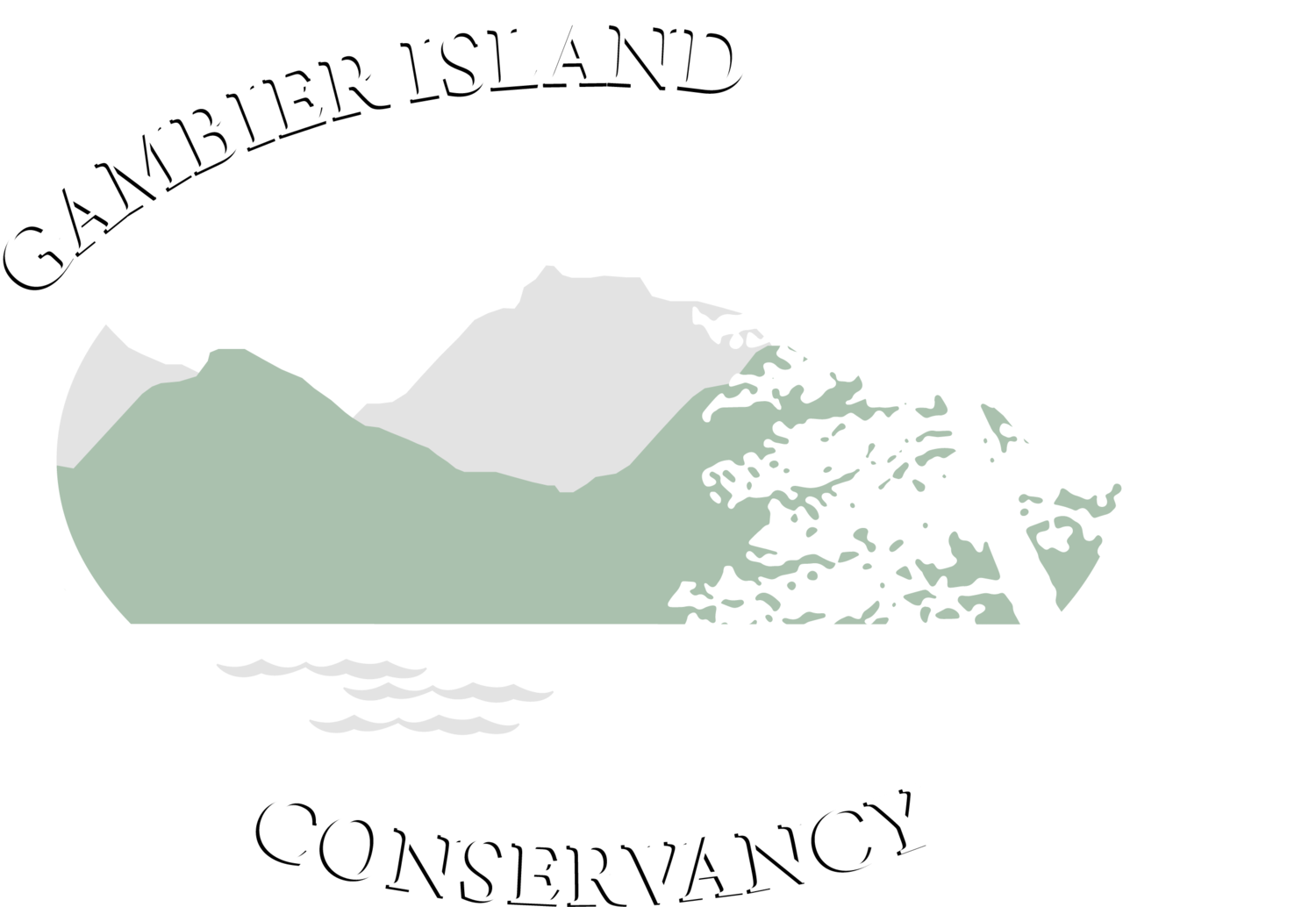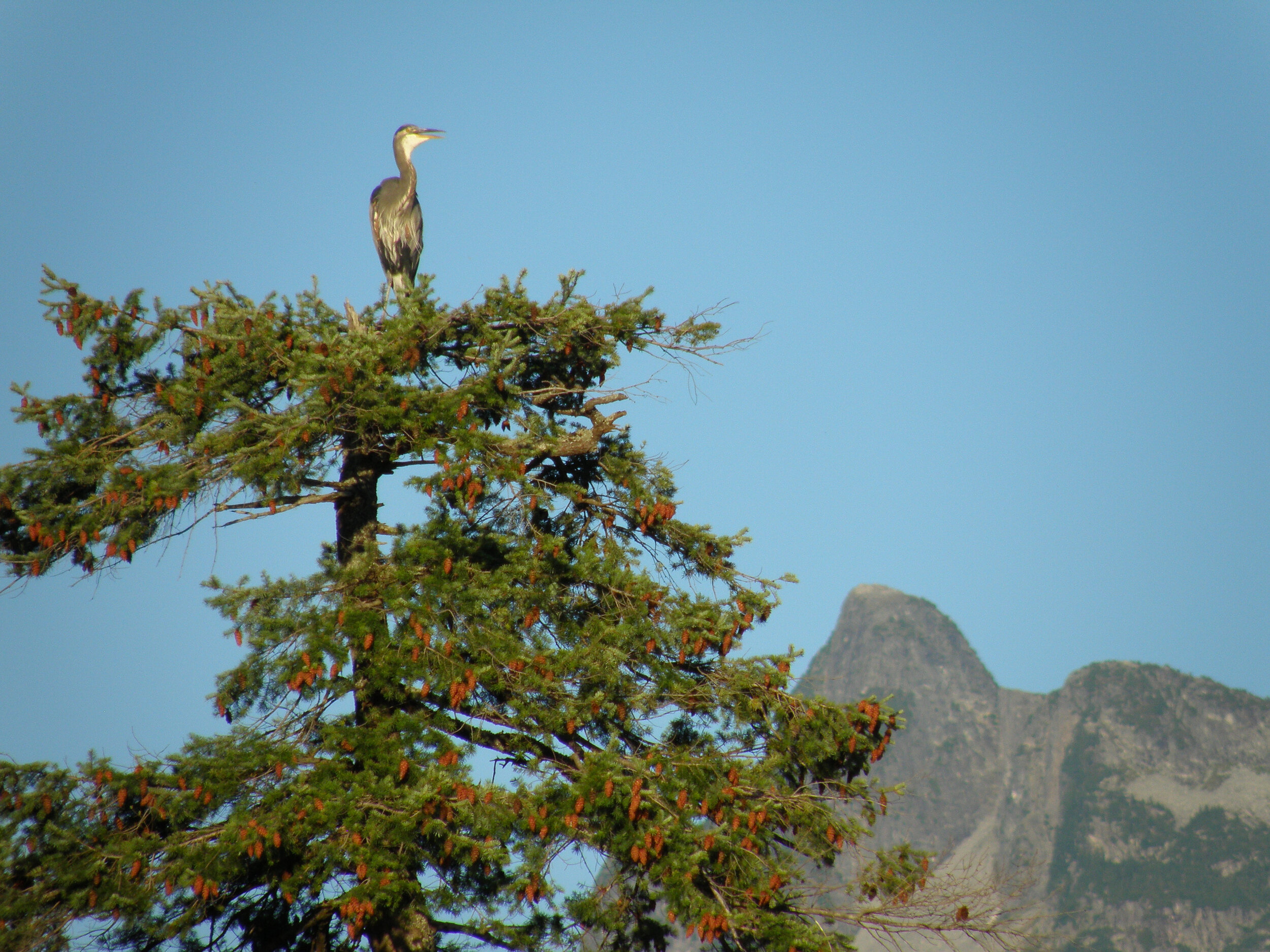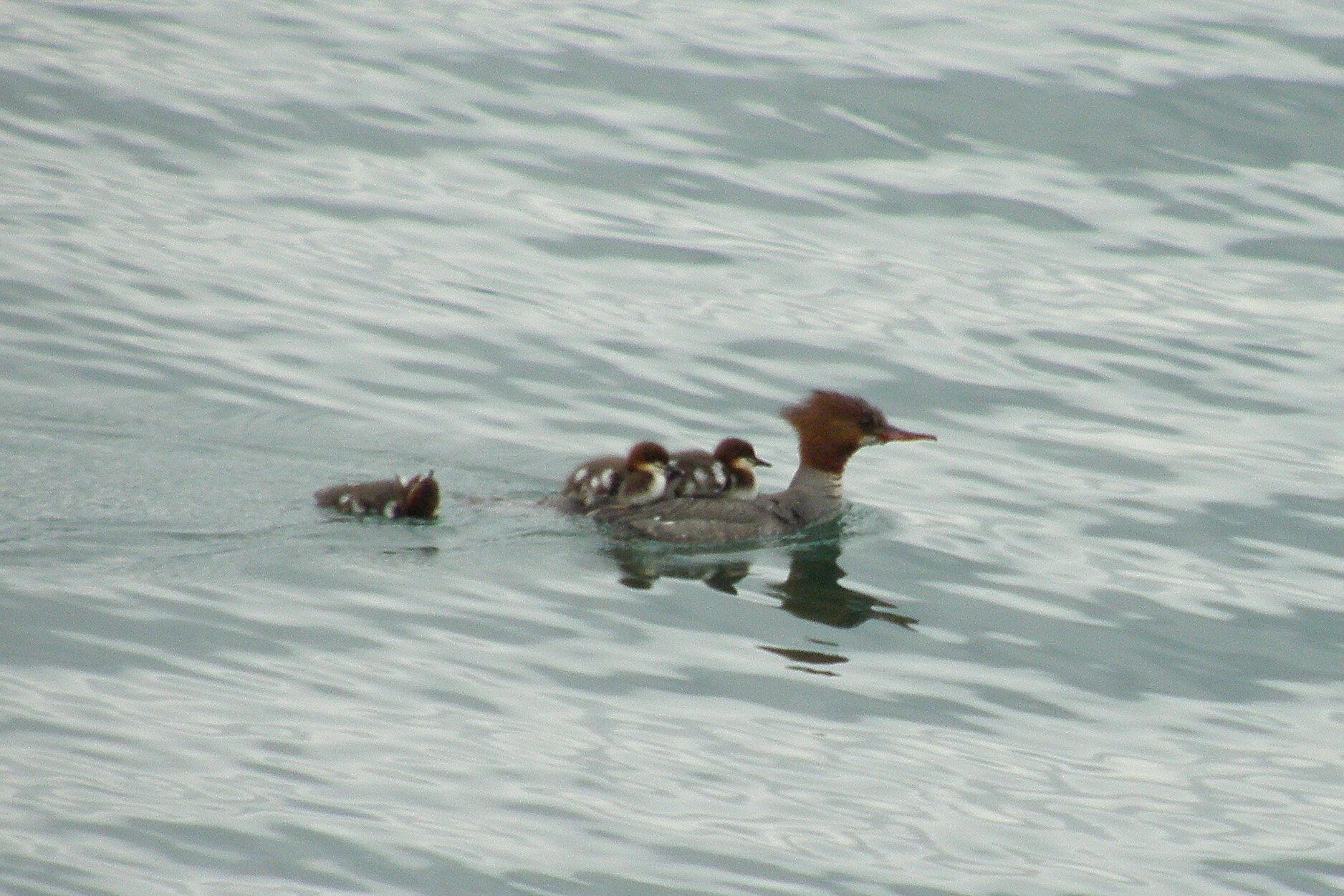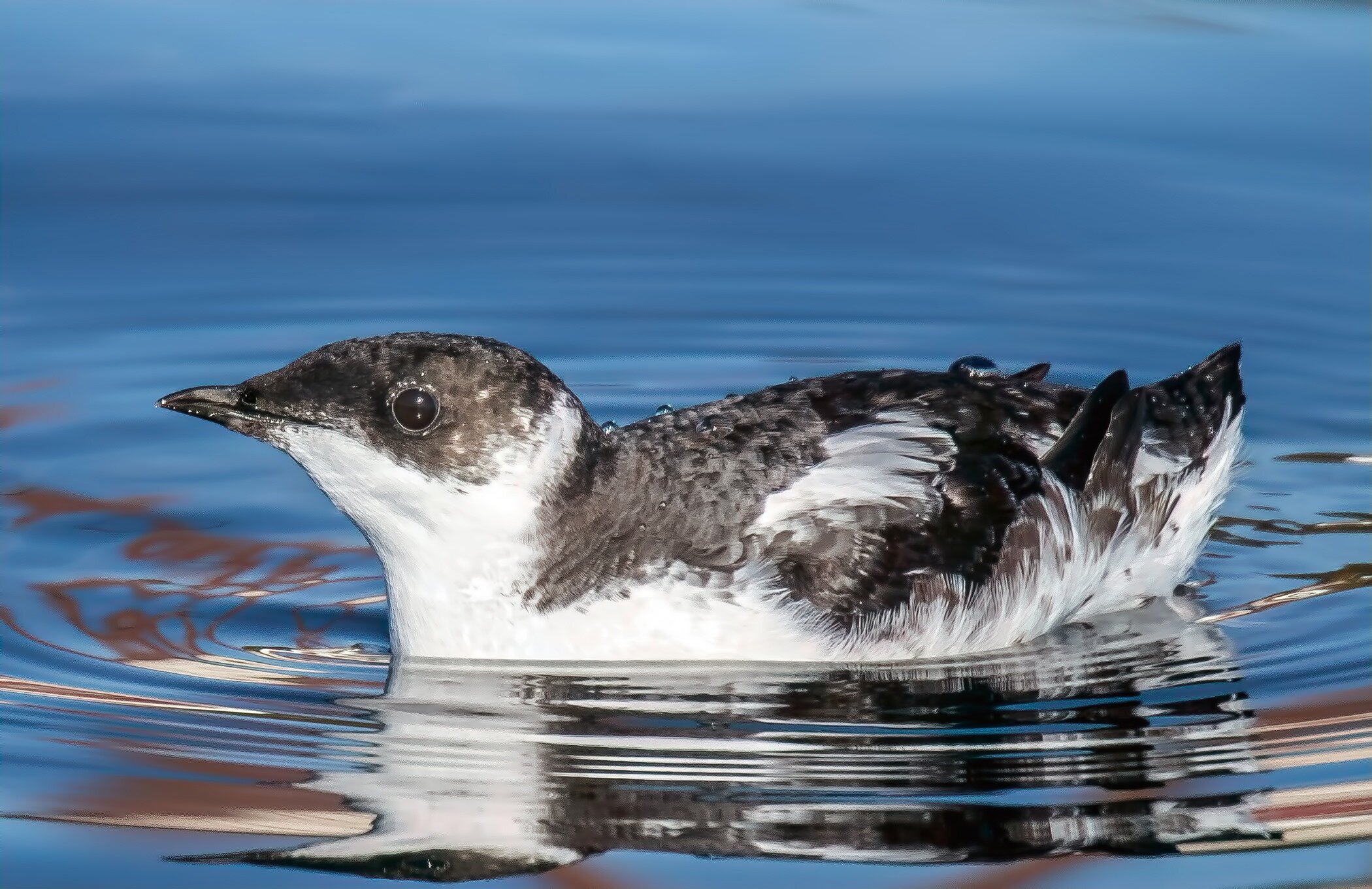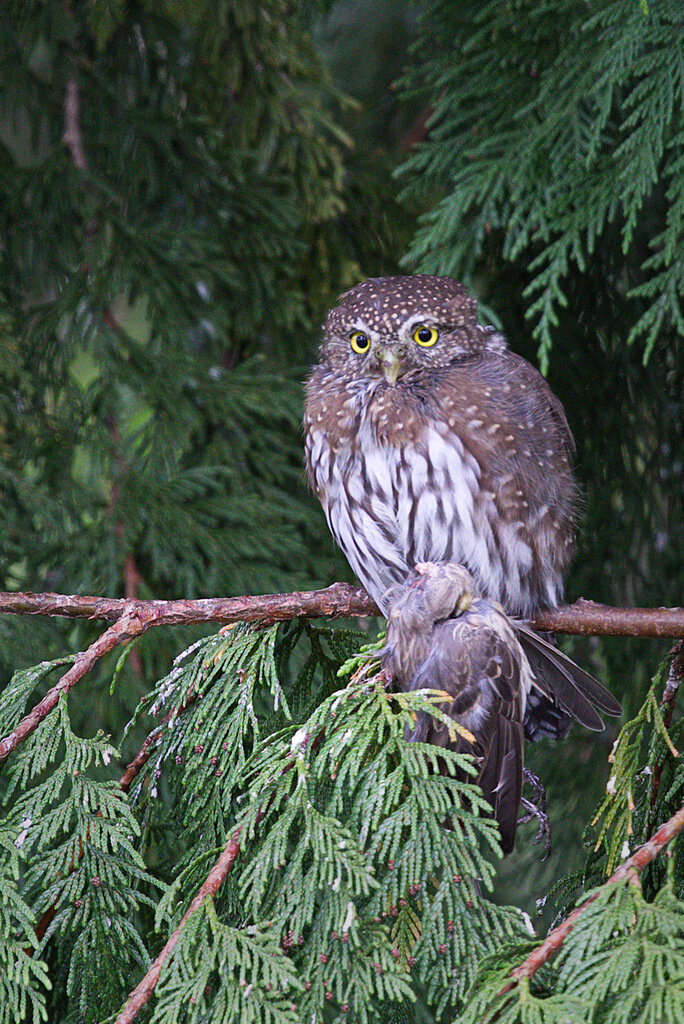Birds
Gambier Island is a hot spot for a wide variety of birds year round.
In the quiet of Gambier's woodland, you're more likely to hear the birds than see them. Stand quietly, and try to track the sounds, and you may see them too: the Common Raven, with its variety of calls--caws, croaks and bell-like sounds; the Varied Thrush, with its clear series of single notes; and the many varieties of Woodpeckers, with their hammering and drumming. If you look upwards through the forest, particularly near the coastline, you may see a Bald Eagle or Turkey Buzzard soaring.
Like other west coast islands, Gambier, with its extensive coastline, provides excellent habitat for shorebirds. As well as common species like gulls and a variety of ducks, you'll see Blue Herons and Kingfishers taking advantage of docks and boats as perching spots. On rocky islets off Gambier's coast, you may see Oystercatchers.
The east side of Gambier Island and the southern area of Átl’ka7tsem/Howe Sound, were officially designated Important Bird Areas in 2018. This IBA was designated for three species at the global level: Western Grebe, Barrow's Goldeneye and Surf Scoter; and one species at the national level: Great Blue Heron.
Important Bird Areas (IBAs) are discrete sites that support specific groups of birds: threatened birds, large groups of birds, and birds restricted by range or by habitat. IBAs range in size from very tiny patches of habitat to large tracts of land or water.
The area hosts a wide array of marine birds characteristic of the west coast of North America. Seabirds such as species of cormorants, gulls, guillemots, murres, and murrelets spend much of their lives at sea but congregate to breed along the coast, with some colonies as large as 400 breeding pairs in the Sound (ECCC, 2019).
For those living on the east side of the island, the raucous sound of birds at the The Christie Islet Migratory Bird Sanctuary (MBS), located south of Anvil Island, is a common background sound.
Important rules about building setbacks are in place for private property owners to ensure habitat for shorebirds are protected. Learn more from links in Resources.
